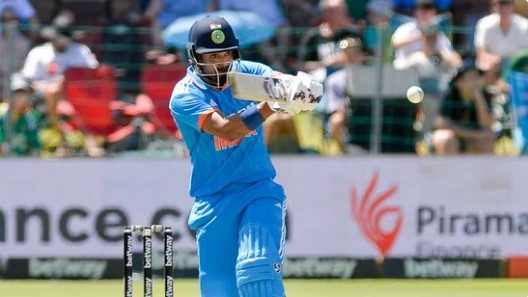India vs South Africa

Live Score: India vs South Africa, 2nd ODI – In the quest for an insurmountable lead, Team India, captained by the dynamic KL Rahul, faces South Africa in the series decider. The backdrop includes the IPL 2024 mini-auction in Dubai, where rising star Rinku Singh secures a spot in the XI at Gqeberha, edging out Rajat Patidar.
Opting to bat in the 2nd ODI, Rahul’s squad witnesses the early departure of opener Ruturaj Gaikwad. Making waves, young talent Sai Sudarshan achieves a rare feat, becoming the second Indian batsman, after Navjot Singh Sidhu, to score consecutive half-centuries in the first two ODIs for India. With Iyer heading to the Test squad, Rinku earns his place in the playing XI. The KKR standout showcased his prowess in the T20Is against South Africa.
In a debut moment, Gujarat Titans’ youngster B. Sai Sudarshan receives the cap and impressively contributes with a gritty half-century in India’s comprehensive eight-wicket victory over the Proteas. Sudarshan, opening the innings, hammers nine boundaries in his 55-run innings off 43 balls. Shreyas Iyer plays a pivotal role with his 52 off 45 balls as India successfully chases down the modest target of 117 in just 16.4 overs.
The series opener witnessed a one-sided affair, thanks to the outstanding bowling performance by Arshdeep Singh, securing his maiden five-wicket haul in the 50-over format. Arshdeep’s magical figures of five for 37 in 10 overs earn him the Player of the Match accolade.
Live Score
India vs South Africa, 2nd ODI – Burger and Maharaj Spark a Comeback with 5 Wickets.
In the ongoing 2nd ODI, Nandre Burger and Keshav Maharaj have combined to secure five wickets for South Africa, signaling a potential comeback for the hosts. The match at Gqeberha emphasizes the irreplaceable value of pace. However, spinner Maharaj has delivered an outstanding performance, contributing significantly for the home team. Kuldeep Yadav, now at the crease with Axar Patel, departs after scoring 1 off 5 balls. India finds themselves on the brink of a batting collapse, with the score at 173/7 in 39 overs.
Live Score: India vs South Africa, 2nd ODI – Significant Wicket as Rinku Singh Departs.
In the ongoing 2nd ODI, a crucial wicket falls for the Proteas as Rinku Singh makes his exit. Despite the doubts, spinner Maharaj proves effective in the battle against Rinku, securing a vital breakthrough for South Africa. Debutant Rinku departs after scoring 17 off 14 balls, with a brilliant stumping from Klaasen. The scoreboard reads IND 171-6 after 37 overs.
Live Score: India vs South Africa, 2nd ODI – KL Rahul Departs; Burger Shines on Auction Day!
Live Score: India vs South Africa, 2nd ODI – Captain KL Rahul Secures Fifty!
In the ongoing 2nd ODI, Captain KL Rahul makes his presence felt in the rainbow nation with an impressive captain’s knock. Leading the team for the entire series, Rahul achieves his 18th ODI half-century. In the 35th over, Rahul and Rinku add 16 runs off Maharaj. The scoreboard reflects IND 163/4 after 35 overs.